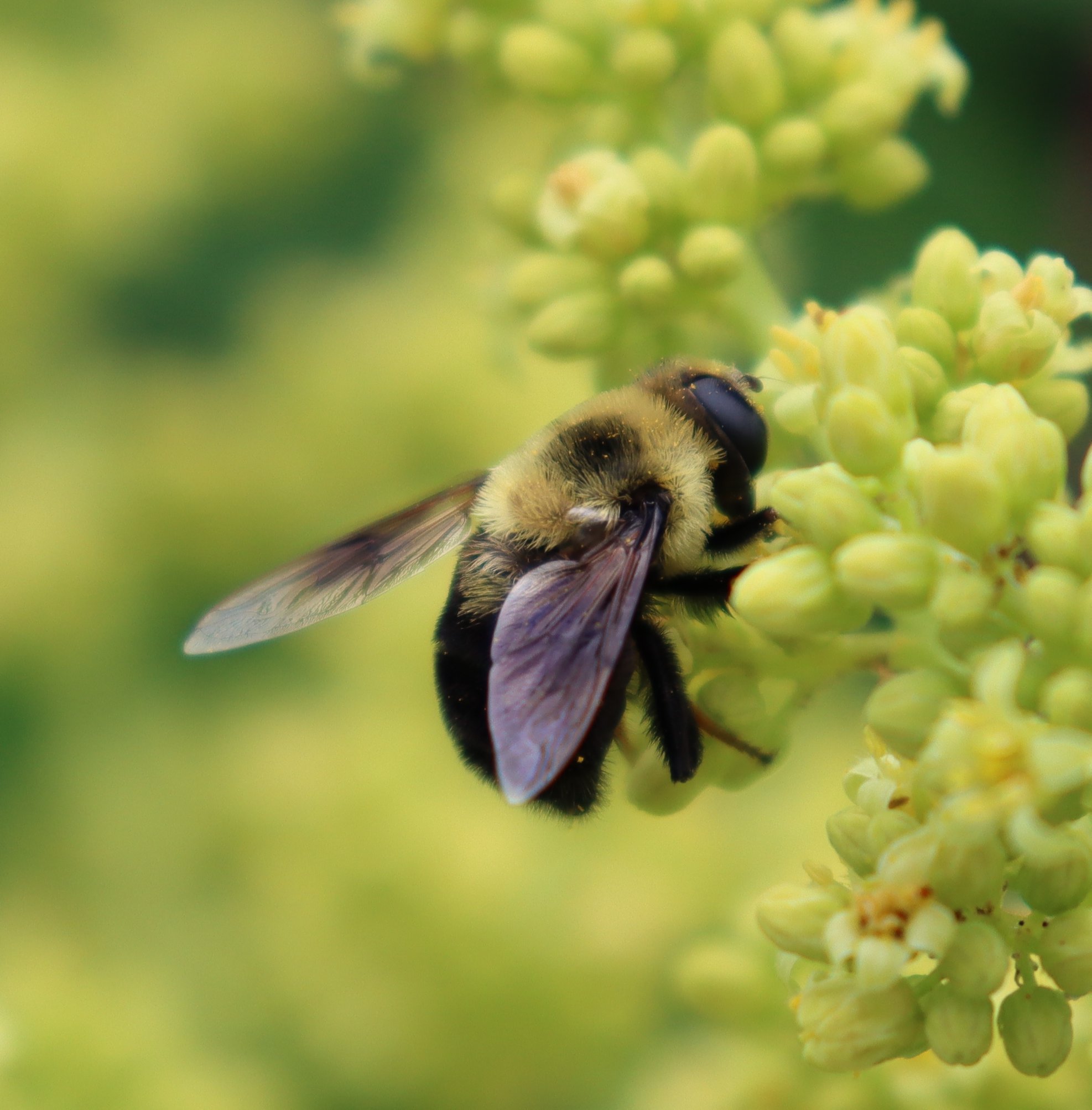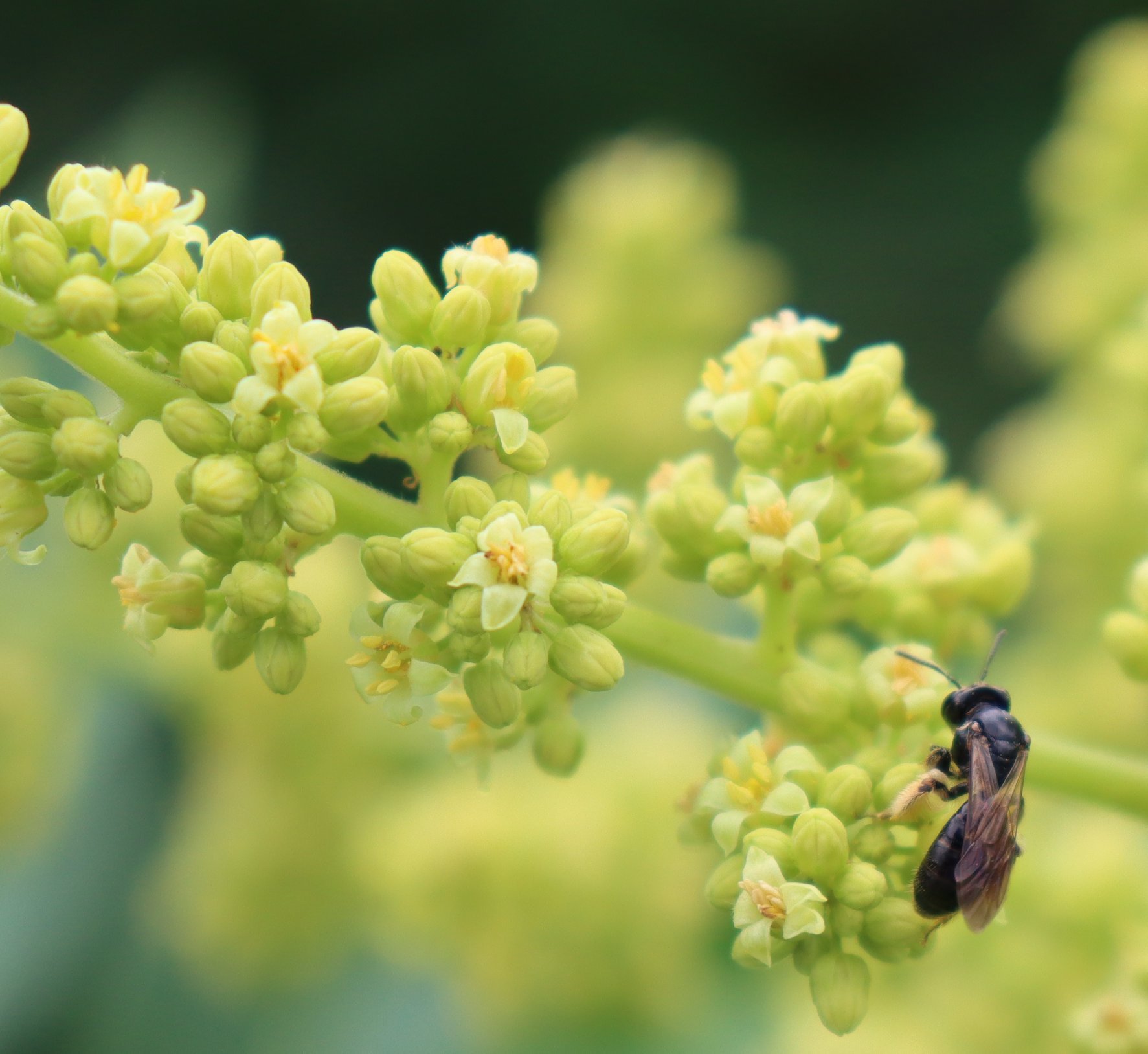On a cloudy day in Early June, this Smooth Sumac thicket was full of native pollinators.
Smooth Sumac (Rhus glabra) was the most popular native plant with pollinators on this early June day. Many species of native flies including a bumblebee mimicking fly. Solitary bees and Wasps made up most of the other visitors.
CLICK IMAGES BELOW TO EXPAND THEM.
Select/click the images above to expand them then click/tap to advance to the next picture. Also, Turn your cellphone side ways for horizontal pictures, and straight up and down for vertical pictures.
Whether you're considering the early spring blooms of Fragrant Sumac; the mid spring bloom of Staghorn Sumac, the Early Summer bloom of Smooth sumac, or the later summer blooms of Winged Sumac - you cannot go wrong with planting sumac species for pollinator support.
CLICK IMAGES BELOW TO EXPAND THEM.
Select/click the images above to expand them then click/tap to advance to the next picture. Also, Turn your cellphone side ways for horizontal pictures, and straight up and down for vertical pictures.
The main condition native sumacs need to prosper is an abundance of sunlight. Fragrant Sumac is the only one of these listed sumac species that doesn't spread much through suckering. They all have reddish and orangish fall color. The two best and most sought sumacs by birds for their fruit are Fragrant Sumac and Winged Sumac. Fragrant Sumac fruits are taken early in the year, around late spring while Winged Sumac fruit are taken throughout the fall. All of these native Sumacs can be used for flavored drinks or as sumac spice. Staghorn sumac shoots can be peeled and eaten as a native vegetable. All of these species of sumac are adapted to dry open grassland conditions as well as soil that is seasonally saturated - but not wetlands.
Winged Sumac being mowed around to prevent it from spreading further.
To control Sumac suckering in the landscape, you can plant where it will be surrounded by lawn which allows you the opportunity to mow around preventing suckers from establishing.
Sumacs are known to host at least 50 native butterflies/moths caterpillars. This attracts a higher diversity and quantity of lepidopteran (moths/butterflies) to grasslands and fields where sumac is native to. Each Sumac species blooms at a time of nectar/pollen for the pollinator community. Fragrant Sumac blooms soon after Spicebush in the spring, before most plants are ready to bloom. Staghorn Sumac blooms in mid Spring, when the wildflowers of native grasslands are too few to rely on. Smooth Sumac blooms in early summer when the grassland wildflowers are just starting to gain blooming momentum and quantity. Then Winged Sumac waits until late summer during a dearth period within which summer droughts and heat waves have challenged the vitality of the landscape. It’s almost if these Sumac species have purposely chosen times of need to release their huge source of pollen and nectar. Sumac thickets either produce female - nectar bearing flowers or male - pollen bearing flowers. So when planting a sumac species - plant at least 5 to assure a mix of genders. Only the female - nectar bearing flowers will produce fruit.
Germination Tips: Naturally, wildfire stimulates mass germination of Sumac seeds, but understanding how much fire is needed to cause germination is an experiment I haven’t tried. The alternative method is acidic scarification which mimics what would happen to the seed if the fruit were consumed by an animal. Use retail strength sulfuric acid with chemical gloves and goggles to acid scarify sumac for 40 minutes. Then wash the seeds clean of the acid with a strainer. This process should happen in the fall or late summer when you collect the sumac fruit. Afterwards, outdoor cold-moist stratify the seed from the fall into the Spring before sowing in mid Spring.
Receive 40% off of our Native Plant Propagation Guide/Nursery Model book when purchased as a package. deal with either our Native Meadowscaping book or our Native Plant Agriculture book at this link.
Learn about what our Native Meadowscaping book has to offer here at this link.
Learn about what our Native Plant Agriculture Vol. 1 book has to offer here at this link.
Learn about what our Native Plant Propagation Guide & Nursery Model has to offer here at this link.















